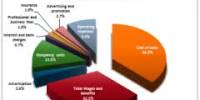Introduction
Personal selling is the process of communicating with a potential buyer (or buyers) face-to-face with the purpose of selling a product or service. The main thing that sets personal selling apart from other methods of selling is that the salesperson conducts business with the customer in person. Though personal selling is more likely to be effective with certain types of products or services, it has important applications for nearly all kinds of small businesses. In fact, most of history’s successful entrepreneurs have been skilled salespeople, able to represent and promote their companies and products in the marketplace.
Types of personal selling
Personal selling is one part of a company’s promotion mix, along with advertising, sales promotion, and public relations. Advertising is any form of paid sales presentation that is not done face-to-face. Television and radio commercials, newspaper and magazine advertisements, and direct mail inserts are well-known forms of advertising. Sales promotion is the use of incentive such as coupons, discounts, rebates, contests, or special displays entice a customer to buy a product or service. Public relations is the act of building up a company’s image in the eyes of the community in the hopes of translating the feelings of goodwill into sales. An example of public relations might include a company sponsoring a charity event.
Personal selling offers entrepreneurs both advantages and disadvantages in comparison with the other elements of the promotion mix. On the positive side, personal selling allows the salesperson to target the message specifically to the audience and receive immediate feedback. In this way, it is more precise than other forms of promotion and often has a greater persuasive impact. Conversely, personal selling cannot reach as many potential customers as advertising, plus the cost of each contact is much higher. Another advantage is that personal selling can be an important source of marketing information. Salespeople may learn about competitors’ products, for example, or about emerging customer needs that may lead to the development of a new product. If the sales force is well distracting as problem solvers and advisers for customers rather than using hard-sell transactional selling may help a small business build loyal, long-term relationships with customers.
A small business may choose to use any or all of the promotion mix elements in selling its products. Deciding how to allocate resources for each component involves a number of factors. Some of the things entrepreneurs should consider when deciding on the ideal promotion mix include the type of product or service, the value of the product or service, and the budget allotted for marketing.
















